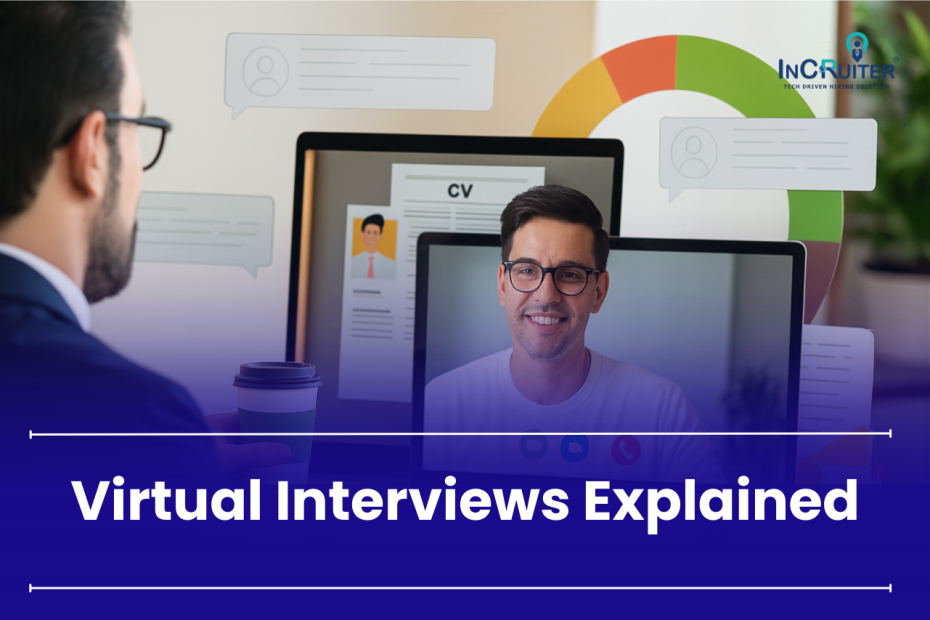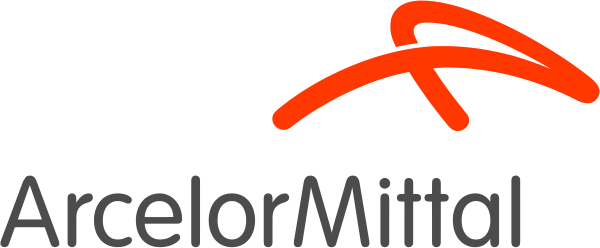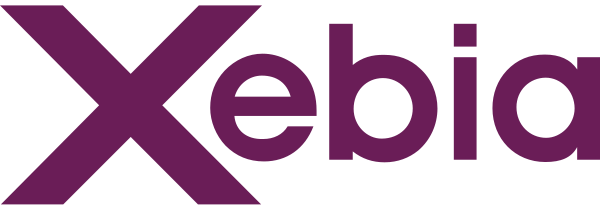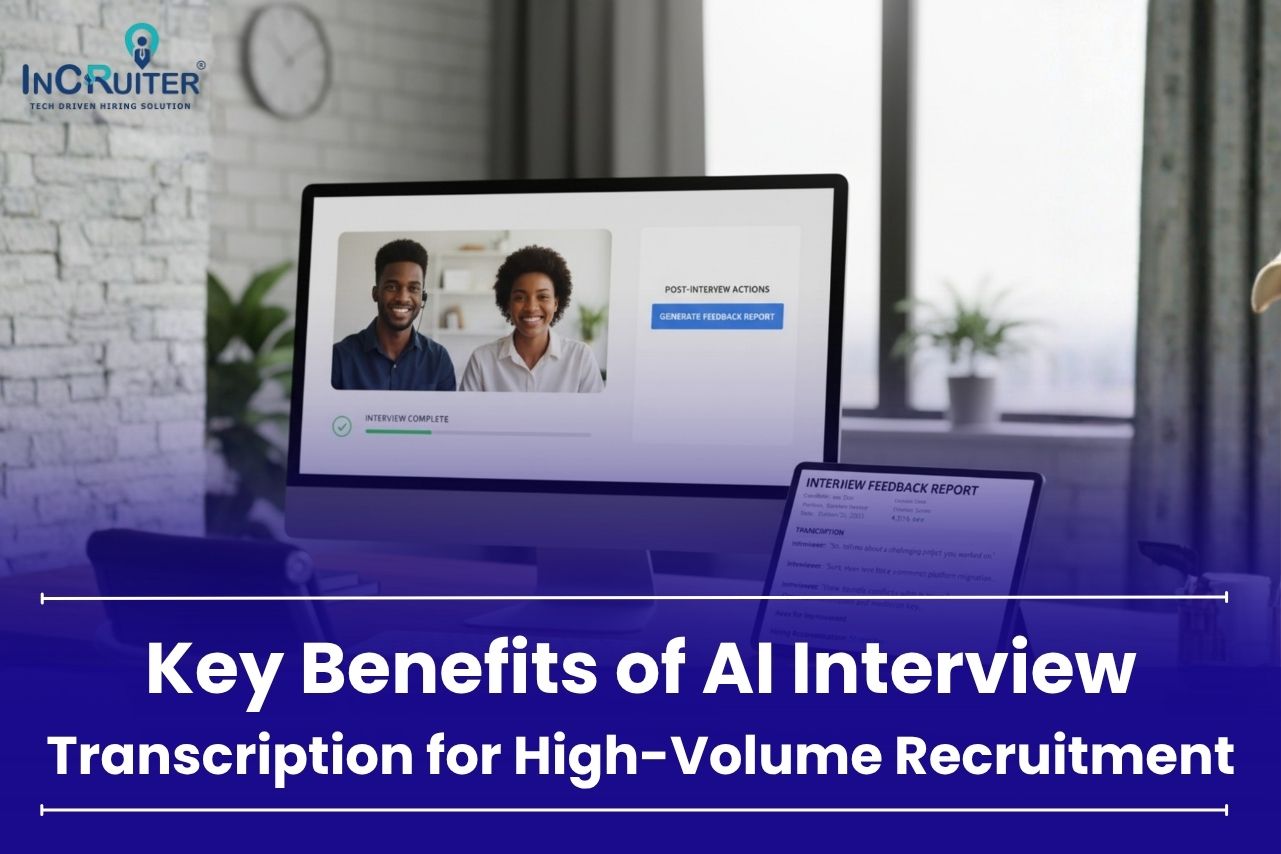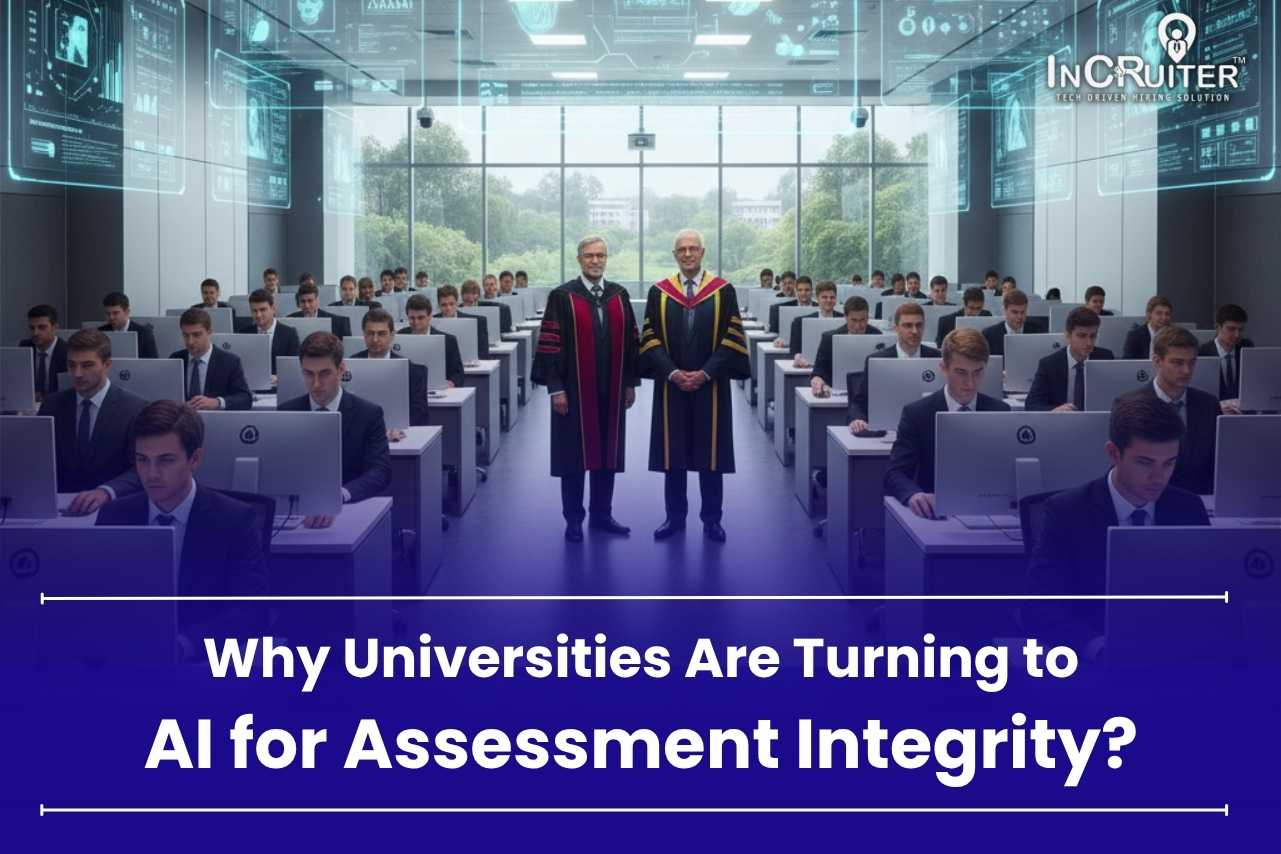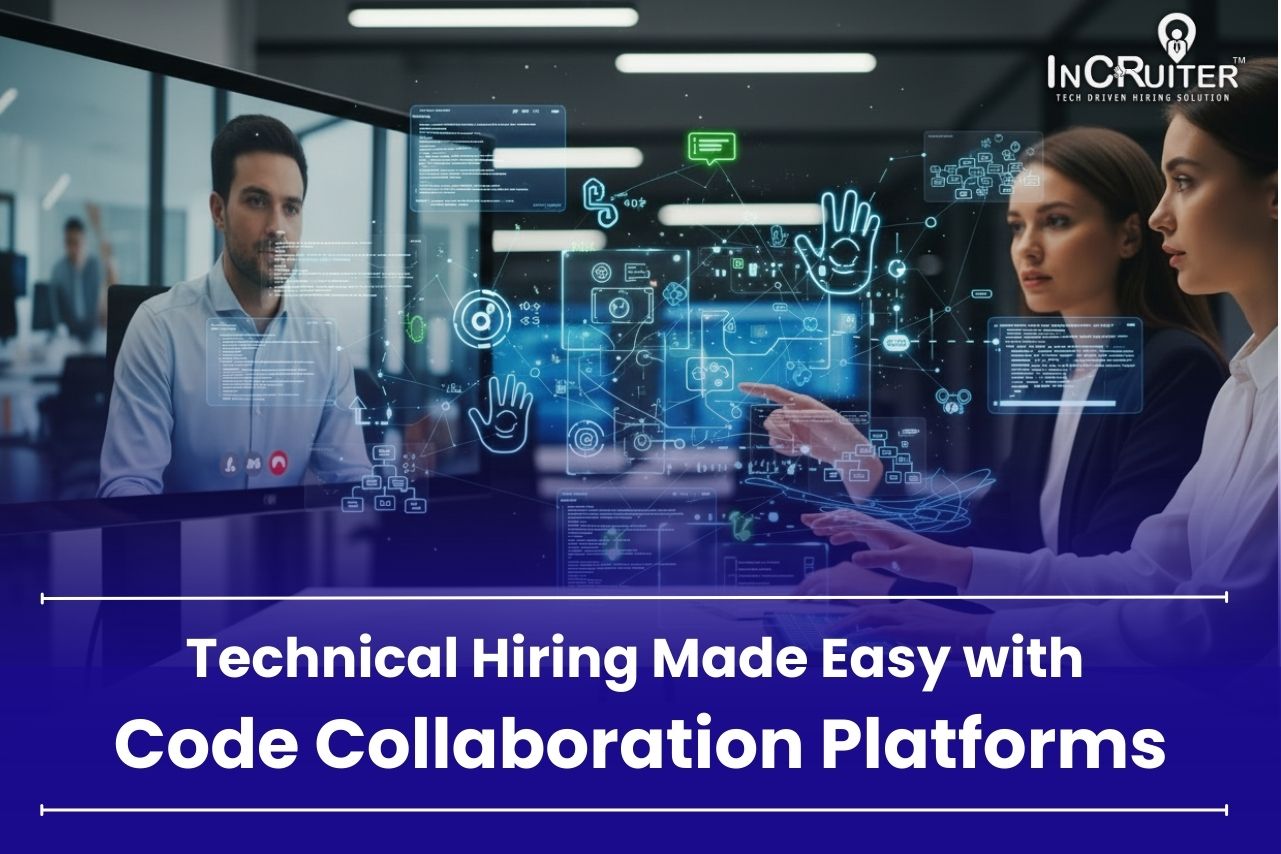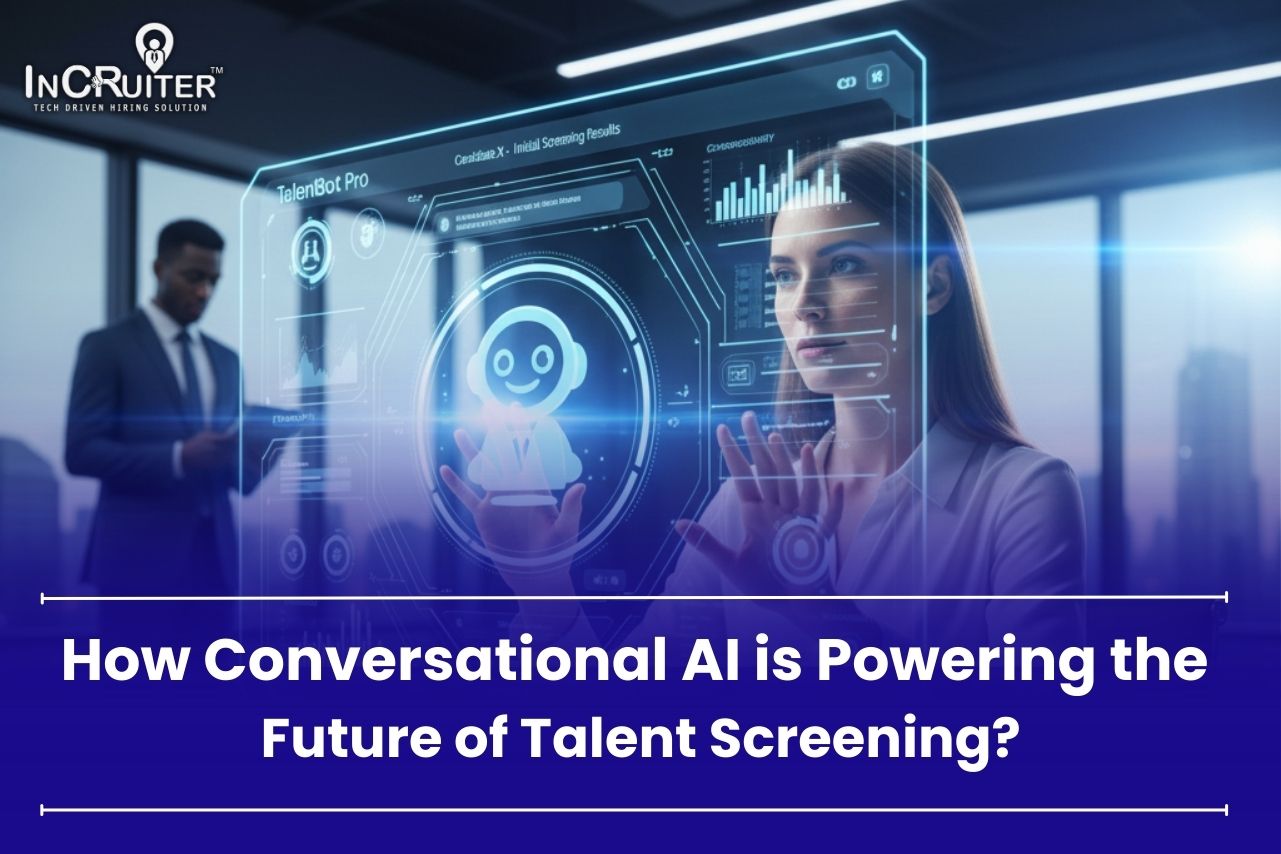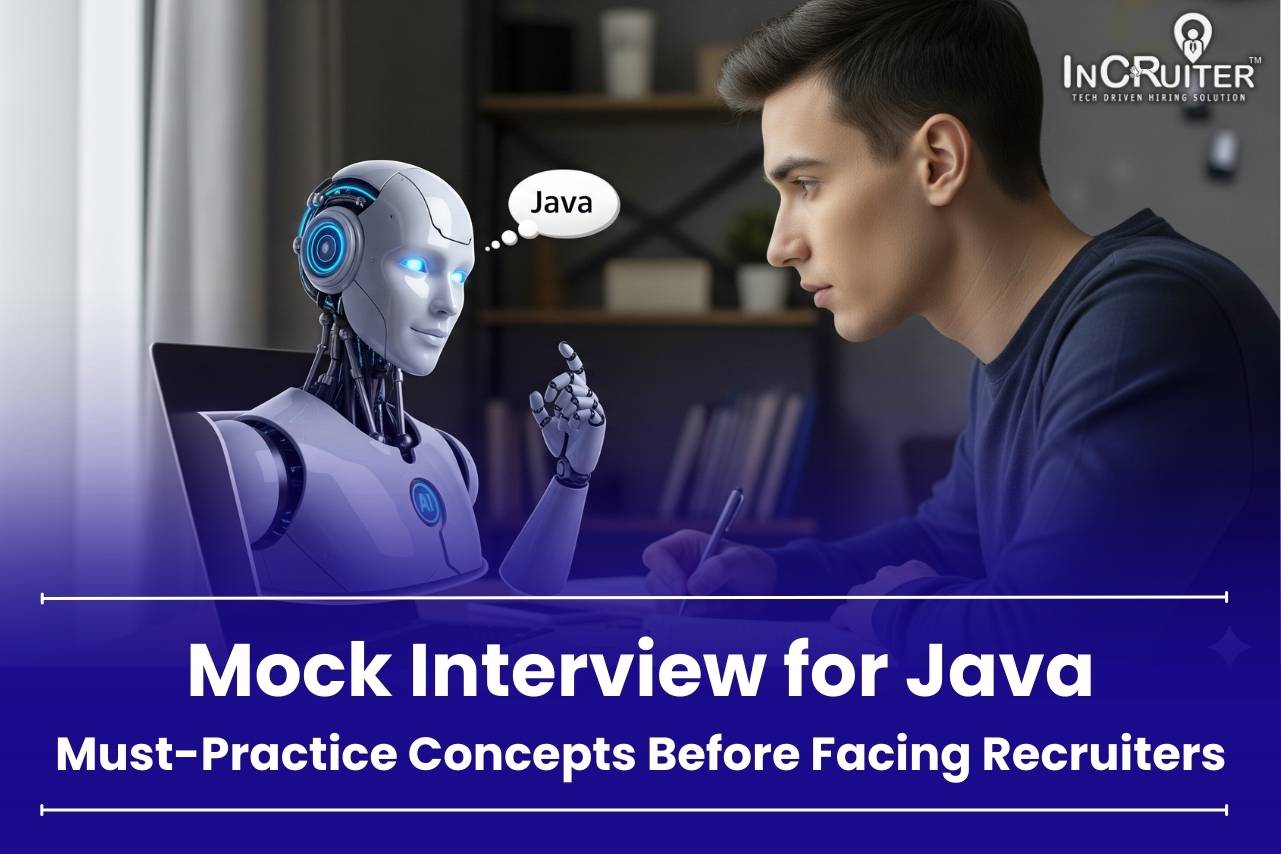Hiring the right talent is no longer limited by location, travel, or time zones. Virtual interviews have emerged as a game-changer in modern recruitment, allowing companies to connect with candidates anywhere in the world. By using video-based platforms, recruiters can save costs, speed up hiring, and reach a wider pool of skilled professionals. These interviews come in various formats, supported by AI and advanced assessment tools, making them more efficient and fair.
This blog explains how virtual interviews work, their benefits, challenges, and the role of technology in shaping their future.
Common Challenges with Online Interviewing
Common challenges with online interviewing include technical issues such as poor internet connectivity, software glitches, or device malfunctions that can disrupt the flow. Lack of face-to-face interaction may make it harder to build rapport or read non-verbal cues.
Some candidates may feel uncomfortable with technology, which can impact their performance. External distractions, background noise, or unsuitable environments can also affect communication quality.
Additionally, differences in time zones can make scheduling complex, and security concerns may arise when sharing sensitive information over digital platforms without proper safeguards in place.
Types of Virtual Interview Platforms
1. One-Way Video Interviews
An AI interview software system asks pre-set questions on the candidate’s screen. No human interviewer is present during this interview. Candidates are allowed to complete it at any time before the interview link expires. Here, AI helps in recording, storing, and sometimes even scoring applicant responses for review later.
2. Two-Way Video Interviews
This is like a typical face-to-face interview, but it happens on specialized video interview software. Both the candidate and the interviewer talk in real time using platforms like InCruiter IncVid. Here, the interviewer can ask and follow up instantly, making it more interactive and personal than a one-way interview.
3. Hybrid Video Interviews
Hybrid video interviews combine the efficiency of a one-way video interview platform with the depth of live, two-way virtual conversations. Candidates first go through an asynchronous interview, allowing recruiters to screen at scale. Shortlisted applicants then join a live video interview session for deeper evaluation.
How does the Virtual Interview Platform work?
1. Invitation and Scheduling
The hiring team initiates the process by selecting candidates’ profiles and sending interview invitations through the automated interview platform. The email contains the date or time slot, a secure joining link, and access instructions. Some platforms also allow candidates to self-schedule based on available slots.
2. Interview Setup
Recruiters configure the interview format within the platform. This may include selecting question sets, enabling AI-driven adaptive questioning, setting timers for assessments, and activating features like recording, proctoring, or coding environments.
3. Conducting the Interview
Depending on the format, the platform facilitates:
- Asynchronous Interviews: AI presents questions and records responses for later review.
- Live Video Interviews: Real-time interaction with recruiters or panels.
- Coding Assessment Interviews: Integrated coding editors with live or timed challenges.
- Pair Programming Sessions: Shared coding workspace with collaborative tools.
4. Data Capture and Recording
All interviews are automatically recorded, and responses are securely stored. For AI-enabled sessions, the system also generates structured feedback, skill scores, and performance analytics.
5. Review and Decision Support
Recruiters access recordings, transcripts, coding outputs, and AI-generated reports in a central dashboard. This enables detailed evaluation, comparison, and shortlisting based on consistent scoring criteria.
6. Next Steps Management
The platform allows recruiters to update candidate status, trigger follow-up interviews, or send automated notifications about selection decisions, keeping the process streamlined and trackable.
Best Video Interview Platform
InCruiter Video Interview Platform
The InCruiter Video Interview Platform is designed to help organisations conduct structured, efficient, and fair hiring processes entirely online. It supports both live and AI-powered interviews, enabling companies to connect with candidates across the globe without geographical limitations.
Key Capabilities:
- Live Video Interviews: High-quality, real-time sessions with recruiters or panels, supported by screen sharing, recording, and chat options.
- AI-powered video interviews: Automated questioning, adaptive follow-ups, and detailed feedback reports to streamline evaluation and reduce bias.
- Collaborative Coding Environment: Built-in pair programming tools to assess technical skills in real time.
- Automated Interview Scheduling: Smart scheduling tools that reduce coordination delays and improve recruiter productivity.
- Enhanced Candidate Experience: User-friendly interface, clear communication, and flexibility to join interviews from any device.
- Integration with ATS Platforms: Seamless data flow with applicant tracking systems for end-to-end recruitment management.
This platform ensures consistent evaluation through standardised processes, offers in-depth analytics for better decision-making, and creates a scalable solution for organisations looking to hire faster while maintaining quality.
Zoom
Zoom, as a virtual interview platform, enables recruiters to conduct live, high-quality video interviews with candidates anywhere in the world. It supports features like screen sharing, breakout rooms, and recording for later review. With secure connections and an easy-to-use interface, Zoom streamlines the interview process, improves scheduling flexibility, and ensures professional, real-time communication between hiring teams and applicants.
Microsoft Teams
Microsoft Teams, as a virtual interview platform, allows hiring teams to conduct secure, real-time video interviews with built-in collaboration tools. It supports screen sharing, live chat, and file sharing, enabling smooth technical and behavioral assessments. Integrated with Microsoft 365, Teams offers calendar scheduling, meeting recording, and transcripts, making post-interview reviews easier. Its ability to host panel interviews, integrate apps, and manage candidate interactions in one place streamlines the hiring process while maintaining professional communication and a consistent interview experience across the organisation.
Google Meet
Google Meet, as a virtual interview platform, offers secure, high-quality video conferencing that works directly in a browser without extra software. It supports features like screen sharing, real-time captions, and meeting recording for later review. Integrated with Google Workspace, it simplifies scheduling via Google Calendar and allows easy access through meeting links. Recruiters can conduct one-on-one, panel, or group interviews while ensuring smooth collaboration with chat and file sharing. Its accessibility, reliability, and integration make it a practical choice for efficient and professional remote hiring.
Skype
Skype, as a virtual interview platform, provides reliable video and audio calling with global reach, making it suitable for connecting with candidates anywhere. It offers screen sharing, call recording, live subtitles, and instant messaging for real-time collaboration. Skype supports one-on-one or group interviews and allows easy joining via links without complex setup. With its cross-device compatibility and integration with Microsoft accounts, recruiters can manage interviews efficiently while ensuring a professional experience. Its long-standing reputation and accessibility make it a trusted option for remote hiring processes.
WeChat, widely used in China, can also function as a virtual interview platform through its built-in video calling and messaging features. It supports one-on-one and group interviews, screen sharing, and file transfers, enabling smooth interaction between recruiters and candidates. With its large user base in China and integration with mini-programs, WeChat allows interview scheduling, document exchange, and even in-app assessments. Its accessibility, familiarity for local candidates, and ability to combine communication with productivity tools make it a practical choice for conducting remote interviews within the Chinese market.
Advantages of an online video interview platform
1. Cost Savings
Virtual interviews remove the need for travel, accommodation, and related logistics. Employers save on venue bookings and candidate reimbursement, while applicants avoid personal expenses. This makes the hiring process more budget-friendly for both sides, especially when interviewing international candidates, without compromising the quality or thoroughness of the evaluation process.
2. Time Efficiency
By enabling faster scheduling and eliminating commute times, virtual interviews reduce downtime between candidate interactions. Recruiters can conduct multiple interviews in a single day, and decision-making becomes quicker with recorded sessions available for review. This efficiency helps organisations accelerate hiring without sacrificing the depth or quality of the evaluation process.
3. Wider Candidate Pool
Virtual interviews remove geographical restrictions, allowing recruiters to connect with talent across regions and time zones. Companies can target niche skill sets and diverse backgrounds without relocation constraints. This expanded reach increases the chances of finding the most suitable candidates while supporting strategic hiring goals in competitive talent markets.
4. Flexibility
With the ability to connect from any location, virtual interviews accommodate varying schedules and time zones. Recruiters and candidates can choose convenient slots, reducing the likelihood of cancellations or delays. This adaptability benefits companies with distributed teams and candidates balancing multiple job applications or existing professional commitments.
5. Improved Candidate Comfort
Interviewing from a familiar environment helps candidates feel more relaxed and focused. Reduced travel stress and better control over surroundings can lead to more authentic, confident responses. This setting allows candidates to showcase their skills effectively, giving recruiters a clearer understanding of their true capabilities and cultural fit.
6. Standardization
Virtual interview platforms enable consistent questioning and structured evaluation across all candidates. Pre-defined question sets, uniform scoring rubrics, and AI-based insights ensure fairness and reduce interviewer bias. This standardization strengthens hiring decisions by focusing on measurable competencies rather than subjective impressions, improving overall recruitment accuracy and quality.
Tips for Candidates in Online Video Interviews
Test your technology
Candidates should ensure their camera, microphone, and internet connection are functioning properly before the interview. They are advised to choose a quiet, well-lit setting without distractions and disable notifications. A stable setup allows the interview to remain focused and professional.
Maintain body language
Candidates are expected to speak clearly, maintain a steady pace, and look into the camera to simulate eye contact. Sitting upright, using measured gestures, and displaying a confident demeanor contribute to a positive and professional impression.
Rehearse effectively
Thorough preparation involves researching the company, understanding its culture, and reviewing the job requirements. Candidates should practise responding to common and role-specific questions, participate in a mock interview for feedback, and prepare relevant questions to demonstrate interest and alignment with the role.
Handle issues with professionalism
In the event of technical difficulties, candidates should remain calm, explain the situation briefly, and resolve it promptly. Requesting clarification when needed ensures accurate understanding and effective responses during the conversation.
Tips for Recruiters in Online Interviews
Test the platform in advance
Recruiters should verify that the interview platform is working correctly before the session. This includes checking video, audio, screen sharing, recording features, and any integrated assessment tools to ensure a smooth experience for both the interviewer and the candidate.
Provide clear instructions to candidates
Sharing detailed guidelines ahead of time helps candidates prepare effectively. This may include the interview link, technical requirements, expected duration, and any pre-assessment details. Clear communication reduces the risk of confusion or delays.
Structure the interview process
A well-structured format ensures fairness and consistency. Recruiters should prepare standardised questions, define scoring criteria, and align interview objectives with the job requirements to produce measurable and comparable results.
Leverage available tools
Online interview platforms often offer AI-based analytics, skill assessments, and recording features. Using these capabilities allows recruiters to evaluate candidates more objectively, review performance later, and share insights with other decision-makers.
Follow up promptly
Timely communication after the interview maintains a positive candidate experience. Recruiters should provide updates on next steps, clarify timelines, and share constructive feedback where possible to build engagement and employer branding.
The Role of AI in Virtual Interviews
AI in virtual interviews automates candidate screening, saving time and improving consistency. It uses structured questions, adaptive follow-ups, and integrated assessments to evaluate skills and job fit.
Some platforms apply artificial empathy, analyzing tone, expressions, and gestures for deeper insights. AI-generated reports, scoring, and transcripts enable data-driven decisions while reducing bias in early stages.
These AI interview tools expand reach, streamline scheduling, and support fairer evaluations across diverse candidates.
Future of Virtual Interviews
The future of virtual interviews will see AI-driven conversational formats that adapt questions in real time based on candidate responses, creating more engaging and personalised evaluations. Integration with advanced skill assessment tools will allow recruiters to measure technical, cognitive, and soft skills within the same session.
Additionally, VR-based immersive interviews will simulate real workplace scenarios, enabling candidates to demonstrate their abilities in a realistic, interactive environment. These innovations will enhance accuracy, efficiency, and candidate experience, making virtual interviews a central part of modern hiring strategies.
Conclusion
Virtual interviews have revolutionised the hiring process, enabling organisations to connect with talent globally while saving time and resources. Advances such as Conversational AI interview tools, integrated skill assessments, and immersive VR experiences are setting new standards for efficiency and accuracy. By combining technology with structured evaluation, businesses can make more informed hiring decisions.
Experience the next level of recruitment with InCruiter AI-powered Video Interview Platform.






